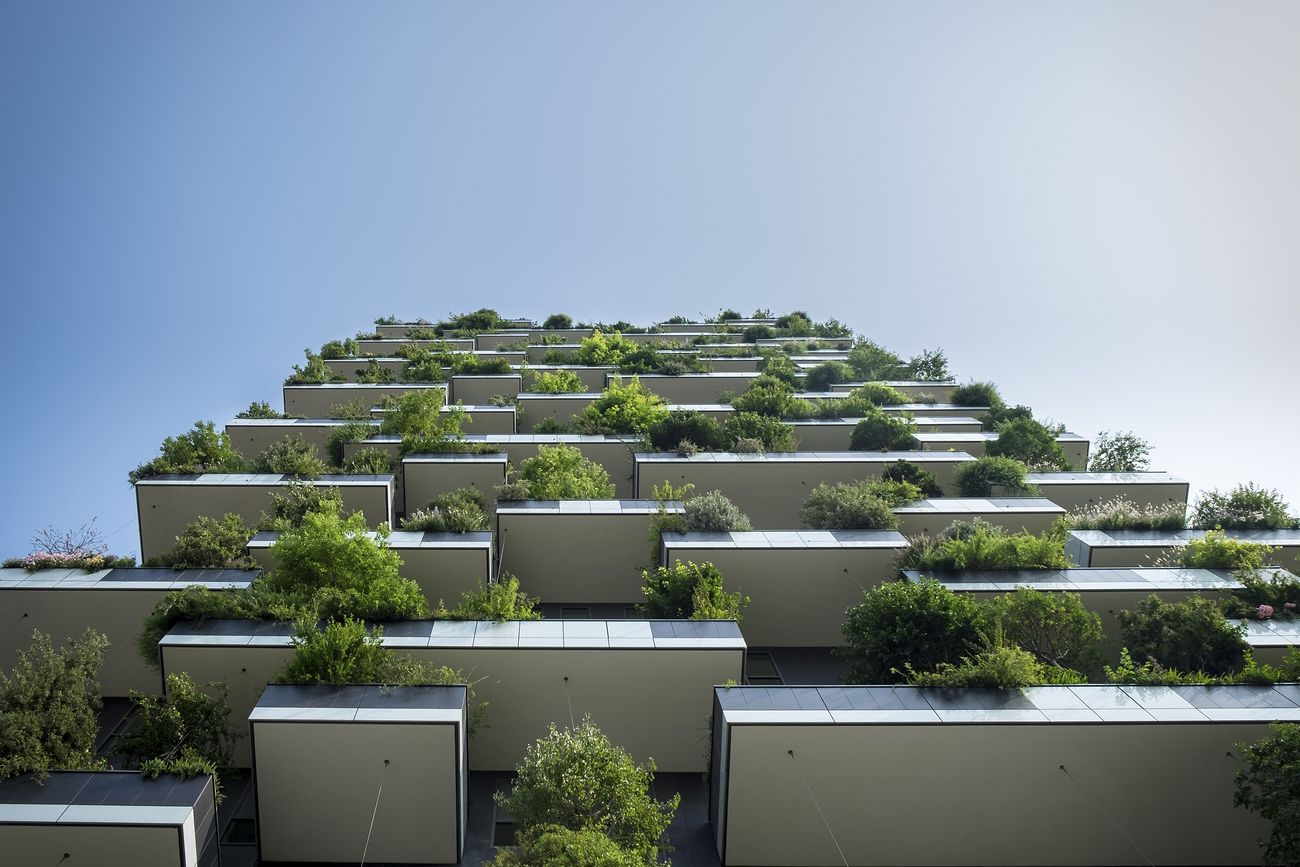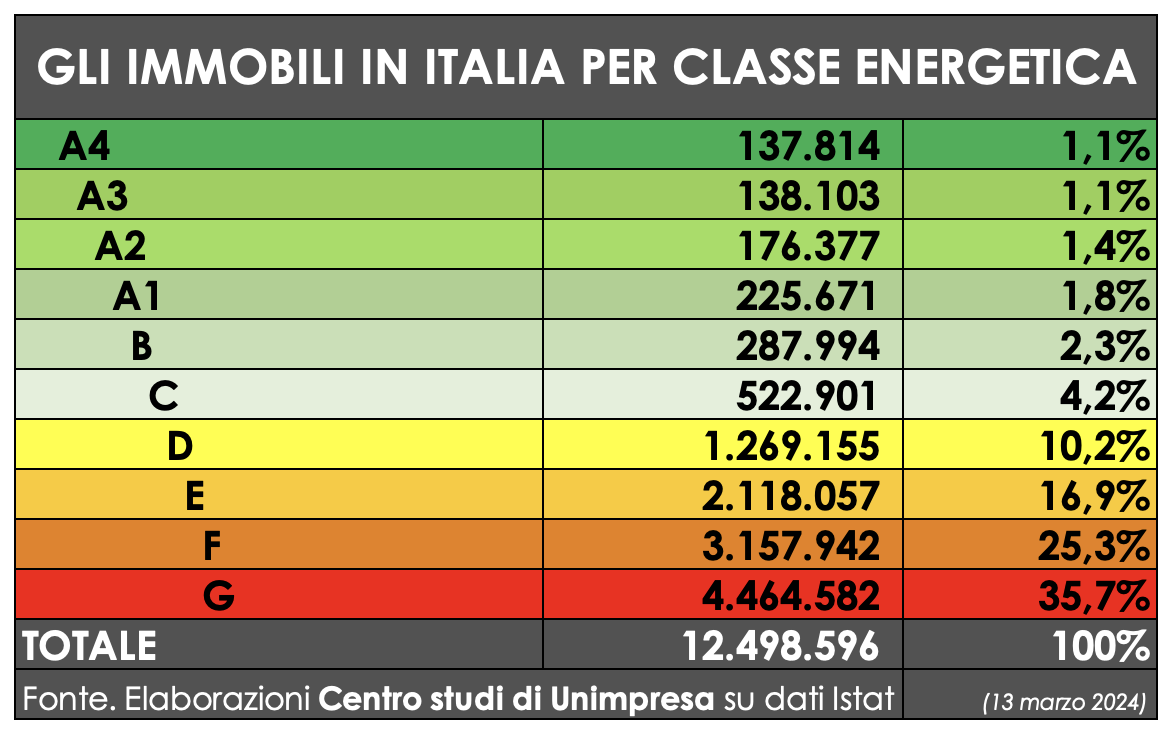This is how high the bill for the EU green homes directive is for Italy. Unimpresa Report

According to the Unimpresa study centre, out of almost 12.5 million total units, there are over 7.6 million (61%) Italian properties classified in the worst energy classes which, on the basis of the EU green houses directive, will have to adapt by 2050. Facts, numbers and comments
Out of almost 12.5 million total units, there are over 7.6 million (61%) Italian properties classified in the worst energy classes, i.e. F and G, therefore falling among those which, on the basis of the new European rules, will have to be redeveloped , with important investments made by families and businesses.
The expense to renovate three out of five homes, those that do not comply with the parameters of the EU "green" directive, approved yesterday by the European Parliament, stands at around 270 billion euros. This is what the Unimpresa Study Center calculates, in light of the new rules called Energy performance of buildings directive, according to which by 2050 all houses in Europe must have zero environmental impact.
«This provision demonstrates how the European Union does not look at overall interests, but very frequently operates on the basis of ideologies. With the result that some countries are advantaged and others, such as Italy, but also Spain, Greece and Portugal, struggle and pay a very high bill" comments the president of Unimpresa, Giovanna Ferrara. «Governments have two years to implement this EU regulatory madness into their respective systems and in June, after the elections, the new European Parliament will take office. There is theoretical space, therefore, but it must be filled with the political will to change the rules because this time there is a risk of seriously damaging the Italian economy" adds Ferrara.
According to the Unimpresa Study Centre, the Italian real estate heritage, largely built before the Second World War, is made up of 12,498,596 units: of these only 137,814 (1.1%) of the total belong to the best energy class, i.e. the A4; Class A3 includes 138,103 properties (1.1%), while A2 includes 176,377 (1.4%) and A1 225,671 (1.8%).
Another 287,994 (2.3%) are in class B, 522,901 (4.2%) are in category C. We then move on to band D which includes 1,269,155 (10.2%) homes, while class E includes 2,118,057 (16.9%). The majority of Italian properties belong to the worst categories, namely F and G, with 3,157,942 (25.3%) units and 4,464,582 (35.7%) units respectively.
In essence, 7,622,524 homes equal to 61% of the total, i.e. three out of five.

In line with the directive approved yesterday, states will have to reduce energy consumption in homes (-16% by 2030 and -22% by 2035), public buildings (-16% by 2030 and -26% by 2028), new properties: zero emissions from 2030 (all with photovoltaic panels), achieving full energy requalification of all properties by 2050.
A plan that could involve an average expense for each property of around 35,000 euros. The range varies from 20,000 euros to 55,000 euros, which is why it is possible to estimate, on a prudential basis, a total expenditure borne by private individuals of approximately 266.7 billion euros in the next 20 years.
This is a machine translation from Italian language of a post published on Start Magazine at the URL https://www.startmag.it/economia/ecco-quanto-e-salato-il-conto-della-direttiva-green-ue-per-litalia/ on Sat, 16 Mar 2024 06:41:56 +0000.
